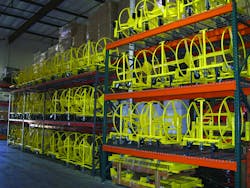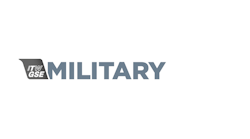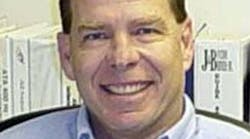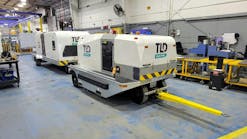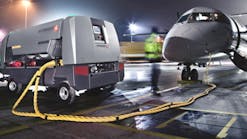J&B Aviation concentrates on the supply of GSE components and 400Hz equipment, with a strong focus on customer service. The company has reason for celebration, marking the 20th year of its business — which happens to be booming. Looking back on its history, the company discusses its business model and strategy for the future.
History
J&B Aviation opened in 1991 in Fairfield, California. It quickly established a place in the North American GSE component market, steadily expanding both services and customer base since. In 2002, the company became a member of the ITW (Illinois Tool Works) GSE group, which includes other industry names such as Hobart Ground Power, Trilectron Industries, AXA Power, Air-A-Plane, ITW Military GSE, and Houchin Aerospace. This has allowed J& B to work hand-in-hand with other group members to enhance services, while remaining an independent business unit with its own offerings and capabilities.
Component Sales
While J&B provides several services to the ground support industry, the company’s largest focus is the distribution of components. The company provides a variety of components, including 400 Hz power cables, PCAir ducts, potable water and lavatory hoses and couplers, and various other accessory products.
According to David Janis, controller at J&B, these products are the center of the business. “The day-to-day sales of all the cables and connectors and hoses — those consumable products are the main, original driver that started the company and continue to be the mainstay of our sales today.” While grasping opportunities to expand services, the company remains firmly focused on this market.
Janis says J&B has found a successful niche in the market by offering a wide range of products that are immediately available. “A customer can know that they can come to J&B for one-stop shopping,” he says. “They know the quality is there and that we have it ready to ship within 24 to 48 hours.”
The company is able to offer short turn times on orders by keeping the necessary volumes in stock. “Our ability to hold larger quantities of the most-needed inventory has really helped out, because airlines have cut their purchasing departments and their holding of inventory,” he explains.
400Hz and Project Design
The company is also a large supplier of 400 Hz equipment, including gate boxes, line drop compensators, cables and motorized cable reels, all of which are used in central 400Hz systems. In addition to providing system components, it also provides assistance with system design, as well as engineering support and training on the systems. It has provided such services more than 100 times in the company’s 20-year history, according to Brian Piety, the company’s national sales manager.
When J&B provides systems designs for a customer, it is a comprehensive project plan. Janis explains that J&B will meet with the customer, design the necessary system in its entirety, lay out equipment needs from the units to the final component, installation verification, training and manuals. J&B has multiple resources and is able to provide the customer with comprehensive plans allowing them to foresee needs, and caters to whatever brand or style of unit the customer prefers, according to Janis.
“We basically run the full gamut of services with regard to the 400Hz ground support equipment side of the industry,” he says, adding, “We will specify the equipment, and come up with the entire design for that process, from end to end — everything from the main plant down to the final cable that’s being connected up to the aircraft for that power distribution.”
In a recent 400 Hz central system development project, J&B assisted in the design of a system for Tucson Airport Authority. The old 400Hz system was replaced with a centrally located bank of three Hobart 180 KVA solid state 400Hz units. This power was then distributed to various gates through 10 J&B/PAGE compensated gate boxes, which had been ordered to further distribute this power to the aircraft. In addition to the 400Hz equipment supplied, J&B also provided the airport with eight J&B/PAGE trailer-mounted transformer rectifiers, which allowed the airport to transform the 400Hz AC power into 28V DC power for use on smaller aircraft that operate on 28V DC power. In addition to the various gate boxes and rectifiers, J&B provided all incidental components.
J&B has also assisted the military to complete installations of 400Hz equipment. One such project was for the Navy’s TACAMO facility at Tinker AFB in Oklahoma. “From the moment the Navy took custody of the facility back in the 90s, they were unable to successfully support the maintenance effort utilizing the hangar’s fixed 400Hz system,” says Dale Miller of J&B’s military sales. “For many years, the Navy utilized large diesel-motor generator power carts to power up the EA-6B Mercury aircraft.”
With a keen eye to the load demands of the aircraft, J&B worked closely with the Navy Facilities Engineering Command (NAVFAC) and tenant squadrons to find a solution. Once designed and load tested, J&B performed an “on-aircraft performance test,” which proved successful. “The Navy was able to operate and test each and every system on the aircraft without the 400Hz system going offline,” he says. Following the project’s completion, the company was also contracted to update the squadron’s flight line.
Consulting
In addition to this full system design, J&B also participates in system consultation. Janis explains, “Quite often we're approached to assist with reviewing specifications for particular 400Hz applications, whether it’s a central systems design or a modification to existing hangars.”
In this function, the company will assist engineers and architects in reviewing designs to ensure plans meet functional and industry regulation guidelines, and to map out the likely electrical and component needs of the project. If the consulting customer desires, the company is then able to assist in the actual system installation and training process further down the line.
Expansion
With its range of services and the line of products which it carries, J&B is continuing to grow its share of the market. The company sees a consistent yearly sales increase, according to Janis, with much of the gain occurring in the international arena. The company has expanded its office and warehouse space to accommodate increased order volumes.
The reason for the company’s success is twofold, according to Janis: the one-stop-shop convenience the operation provides and its service-oriented approach. “One of the reasons we're so successful in what we're doing is the level of customer service J&B provides,” he says. “Our philosophy has been building customer relationships.”
Though focused on maintaining those core values, J&B does not plan to remain idle. Among its strategies for the future, the company expects to continually grow in international markets while boosting its product offerings. “We’re going to continue to excel in customer service and add to the line of products,” Janis says. “We look forward to the next 20 years.”
